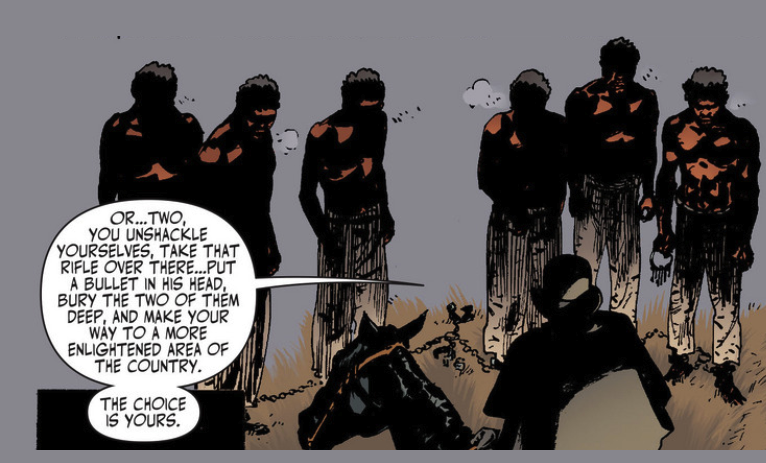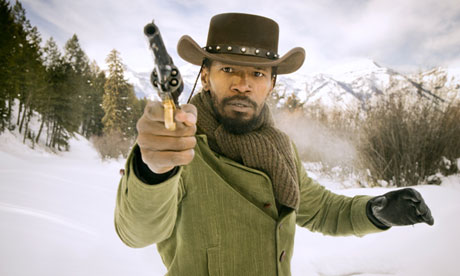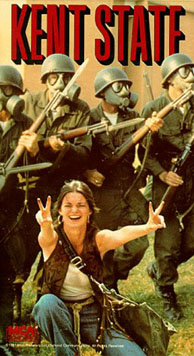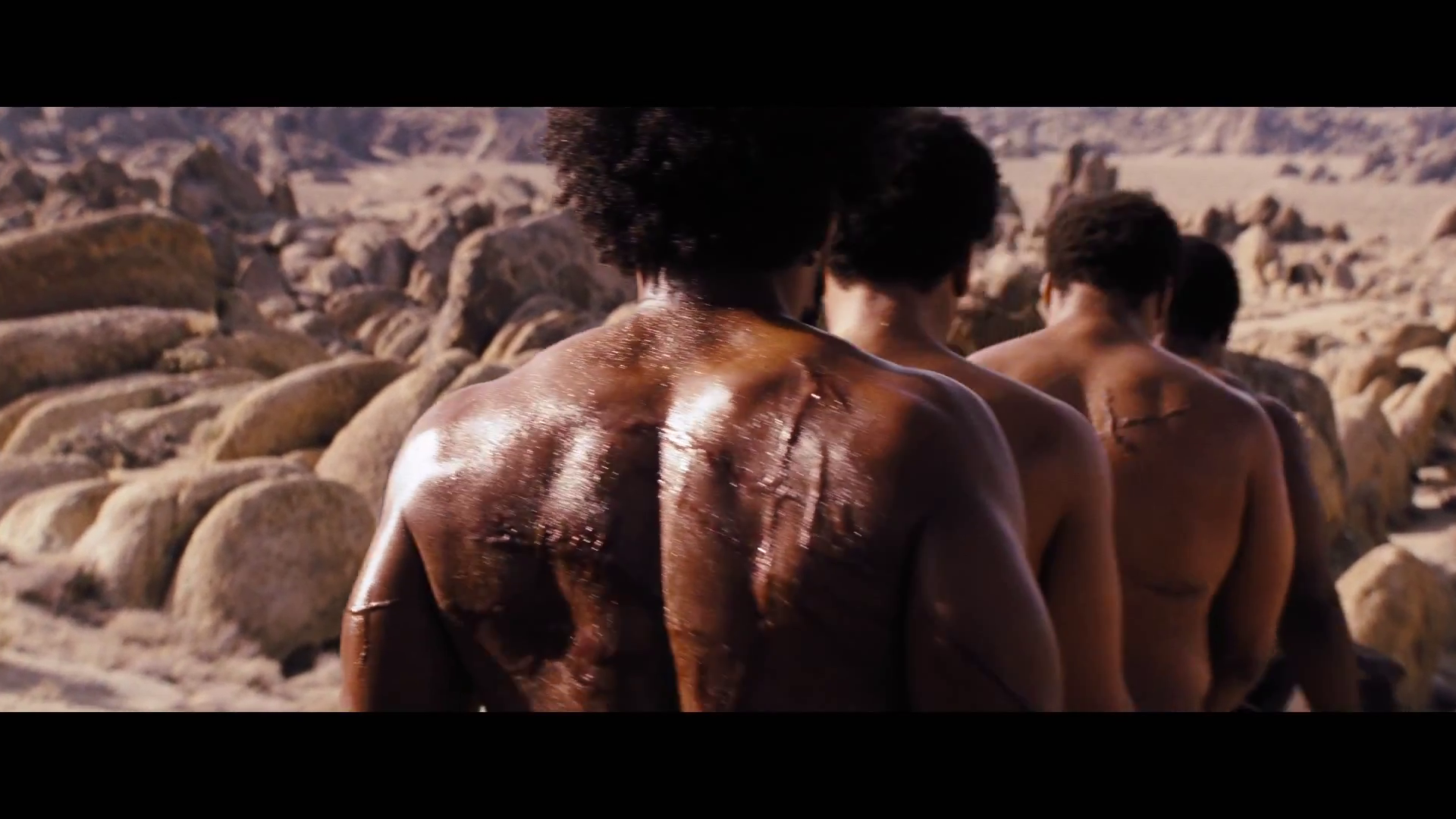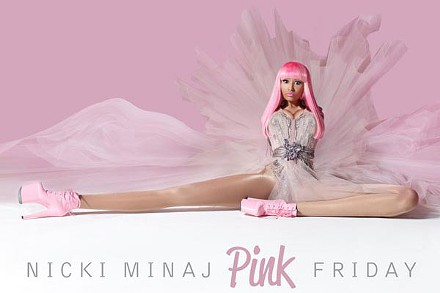Self-help is about helping yourself to great whopping heaps of stuff . Money, wives, prestige, adoration, a perfect body to house your pristine ego — it’s all yours for the asking if you’ll just turn your frown inside out, let a smile be your bludgeon, and follow our twelve simple steps!
Or, if twelve steps seem too complicated, you can always go see Yes Man and learn how to do it in one. Carl (Jim Carey) is a sad, sad, and lonely guy; his wife Stephanie (Molly Sims) ditched him after six months, and he has responded by going fetal. He is stuck in a boring dead-end job at a bank, won’t answer his phone, barely leaves his house, and spends most nights at home watching rented DVDs by himself, too bored (we learn) to even masturbate. Finally, he admits he has a problem, and goes to a self-help revival meeting of the “Yes-Men” led by one Terrence Bundley (Terrence Stamp). Terrence claims that “when you say yes…you embrace the possible!” Armed with this singular, and indeed, single, philosophy, Carey heads off determined to say yes every time the opportunity presents itself . Soon he’s giving rides to homeless people, learning Korean, sucking up to his apocalyptically nerdy boss, approving dicey loans, and — most satisfyingly — canoodling with the yummy Alison (Zooey Deschanel) who looks (and indeed, in real life, actually is) about two decades younger than him. Who wouldn’t say yes to that?
Indeed, the whole Yes Man concept is charged with a kind of lobotomized libidinousness. Saying “yes” to everything allows Carl to absolve himself of all personal responsibility. By replacing his conscience with an arbitrary shibboleth, Carl escapes from Adam’s curse. He no longer knows good from evil; he now literally knows only what he says. Liberated from moral choice, he is invested with an irresistible prelapsarian glamour. He charms his immediate supervisor, Norm (Rhys Darby) by attending his Harry Potter costume parties; he charms his best friend’s fiancée by agreeing to host her bridal shower; he charms a jumper back from the ledge by leading the onlookers in a rousing singalong. Moroever, Carl’s newfound charisma has a definite erotic edge. Women in bars and in bridal stores swoon and giggle when he flirts, his toothless septuagenarian landlady neighbor gives him a surprisingly skillful blowjob; Alison falls seamlessly in love with him. Even his ex-wife wants to get back in his bed.
Of course, there are some downsides to the yes-man program. If you never say no, people are going to take advantage of you — and, indeed, Carl’s home is virtually taken over by the parasitic Rooney (Danny Masterton.) More importantly, abdicating personal responsibility isn’t much different than abandoning personhood altogether; Carl sets no boundaries on his self, and therefore, his self basically disappears. His appeal is that he is all things to all people — a nerd to Norm; a daring adventurer to Alison; a drinking buddy to his friend Peter (Bradley Cooper); and so forth. The effect is magical, but it’s neither trustworthy nor exactly human; and when Alison figures out what’s going on, she’s repulsed. “How do I know if anything you did was really true?” she asks him in horror before dumping his bony ass.
It is at this point that the movie really reveals its diabolical genius. Losing Alison makes Carl realize that saying “yes” is not in itself a sufficient philosophy. There’s something else…something missing. But what is it? Confused, he seeks out guru Terence again, who obligingly explains that he must continue to say yes…but only when he actually, really want to! “Yes” is simply a step along the way to the goal of a new, exciting, and fully functional self.
But what kind of functional self is this, anyway? Both Peter and Alison mock the “say yes because you really want to” philosophy as an over-obvious tautology — you need a guru to tell you that? When you start to think about it, though, the philosophy is far from obvious. In fact, it’s the opposite of obvious. It’s flat-out stupid. In the first place, there are some things you simply can’t afford to say yes to, no matter how much you want to — Carl and Alison have mysteriously bottomless reserves of cash with which to indulge their consumer flights of fancy, but that’s hardly true for everyone. And in the second place — well, you don’t have to be a Kantian to realize that even the more complicated Yes Man philosophy presents certain moral problems. Even if you really, really want to do so, there are many things you just shouldn’t say yes to — unprotected sex with a stranger, for example, or murdering your boss, or invading Iraq. It is possible to deeply desire to do things that are harmful to others. Because you’re not the only one in the world, you have an obligation not to fuck your neighbors over just because you feel like it.
Of course, Yes Man pretends that it is about reaching out; helping homeless people, organizing bridal showers for friends, being truthful with your lover. Saying “yes” is supposed to be a way to open yourself to life. In fact, though, the opposite is the case: it is not the universe which fills Carl, but Carl who fills the universe. There he is saving the jumper; there he is match-making; there he is on television at a football game; there he is climbing the corporate ladder, there he is romancing a woman who, by all normal standards, is a good bit out of his league. His inner drama, his healing, is the focus of the narrative, and everyone revolves around it. Carl starts out as a failed narcissist; he ends as a successful one.
This is perhaps most clear in the scene in which Carl’s ex-wife asks him to come to her house. She has just broken up with her lover, and is horribly distraught. Weeping, she comes on to Carl, asking him to stay the night. Trapped by his “yes” pledge, he almost agrees — but then he says “no”. Undoubtedly this is the right thing to do for both of them…but Carl doesn’t explain this, or try to comfort her, or show any especial sympathy for a woman who he claims to have loved. Instead, his voice, when he utters the crucial negative, is both triumphal and somewhat sneering. She made him suffer, and now he doesn’t need her.
Carl’s new self-confidence, his new self-identity, is, in other words, built on the most puerile kind of revenge fantasy. He gets to humiliate the woman who broke his heart. And, of course, the best part is that, once he’s free of her, she ceases to matter. We never see her again — she’s out of his life and now he can concentrate on what’s best for him and him alone. Her pain and sadness aren’t real, because nobody is real; they’re all just small cogs in the blandly improbable wish fulfillment that Carey and company have concocted. In this daydream, all that truly exists is Carl, the self he’s helped, and his own oblivious, ravenous chant — “yes, no, yes, no, yes, no” — spoken not to communicate with others, but to efface them.



